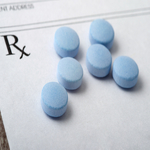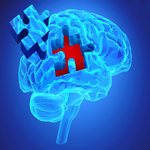by Christopher Reveley, MD, and Annie Peters, PhD, LP
The Opioid Epidemic
According to the National Institute on Drug Abuse (NIDA), nearly 100 people die from opioid overdose in the United States every day, and 2.6 million Americans struggle with opioid addiction. The prescribing of opioid pain relievers became much more common in the late 1990s, and it soon became evident that these medications were powerfully addictive. Opioid overdose deaths have increased significantly in the years since. Many of those addicted to heroin started with the abuse of prescription opioids.
Overdose along with the spread of HIV, hepatitis C, and withdrawal syndromes in babies born to addicted mothers constitute a nationwide crisis that has overwhelmed the resources of state and local health care delivery services. Recently, the White House identified the opioid epidemic as a national public health emergency.
How is Harmony Responding to Opioid Epidemic?
Harmony Foundation in Estes Park, CO, has been treating addiction for 48 years and has fostered a generation of long-term recovery support for individuals and families. Harmony’s mission is to provide the foundation for sustained recovery from the diseases of drug and alcohol addiction. Harmony staff is committed to continuous improvement and closely monitors a client experience, treatment response, and the research literature on addiction treatment. In the field of opioid addiction research, advances in behavioral treatment, neurobiology, and brain imaging have given treatment programs guidance in developing better services. Harmony now offers HOPE – Harmony’s Opioid Programming Experience. HOPE is offered to all Harmony clients with opioid use disorders. The program involves enhanced medical, counseling, and case management services specifically tailored to meet these clients’ unique needs.
HOPE: Medical and Clinical Approaches
HOPE begins with thorough medical and psychological evaluations. Collaboration with the client, members of the interdisciplinary team and, when appropriate, family and referral sources, determine the most effective treatment plan. All HOPE clients are invited to participate in weekly Opiate Support Groups led by a professional addiction counselor. This group addresses the unique challenges of early opioid recovery, including uncomfortable physical and psychological symptoms, cravings, and strategies to avoid rapid relapse. In this setting, clients support each other and are educated about the process of recovery.
Harmony has provided all clients with medication-assisted treatment (MAT) for many years. This combination of education, counseling, and the use of medication in early recovery is part of the Harmony philosophy. HOPE expands MAT to include medications that alter the physical response to opioids, reduce craving, and give the individual time to heal from the psychological, social, and spiritual wounds of addiction.
HOPE clients may choose to avoid medications altogether or use only sleep and anxiety-reducing medications during the acute withdrawal period. For others, naltrexone, an opioid receptor blocker, can prevent the euphoria of opioid use and help control cravings, thereby changing the client’s drive to use illicit opioids after treatment.
Buprenorphine
This partial opioid agonist, administered in a tapering protocol, may be chosen by the treatment team and client to ease symptoms of severe opioid withdrawal during detoxification. On an individual basis, this medication may be continued during early recovery, most commonly for those with severe and persistent opioid addiction. Care following residential treatment may include ongoing buprenorphine to provide a craving-free foundation for the client as they rebuild damaged interpersonal and work relationships and regain physical and emotional health. The ultimate goal with all treatment approaches is complete abstinence from all opioids.
While some may question how an opioid medication (buprenorphine) can help someone recover from opioid addiction, this treatment approach is supported by organizations such as the World Health Organization, the American Society of Addiction Medicine, the Substance Abuse and Mental Health Services Administration, NIDA, the Veterans’ Administration, NAADAC – the Association for Addiction Professionals, and the National Association of Addiction Treatment Professionals. Due to the number and quality of research studies that have been completed on the use of buprenorphine in treating opioid use disorders, the level of evidence for the effectiveness of buprenorphine treatment is considered to be high (Thomas et al., 2014). Positive outcomes typically include improving retention in treatment and reducing illicit opioid use.
The Harmony care team works closely with clients who choose to include buprenorphine in their treatment strategy. This will typically involve full participation in HOPE and a recommendation for participation in Harmony’s Transitional Care Program (TCP), an intensive, 90 day intensive outpatient program coupled with monitored sober living and medication management by Harmony providers. When clinically indicated or to accommodate client preference, Harmony’s case managers may refer clients to other programs with similar services.
If you or someone you know is struggling with opiate addiction and needs help right away, Harmony is here to help. Call us at 866-686-7867 and one of our admissions specialists can discuss next steps.
References
https://www.drugabuse.gov/drugs-abuse/opioids/opioid-crisis
Center for Behavioral Health Statistics and Quality (CBHSQ), 2016. 2015 National Survey on Drug Use and Health: Detailed Tables. Rockville, MD: Substance Abuse and Mental Health Services Administration.
Thomas, CP, Fullerton, CA, Montejano, L, Lyman, DR, Dougherty, RH, Daniels, HS, Ghose, SS, & Delphin-Rittmon, ME. Medication-assisted treatment with buprenorphine: Assessing the evidence. Psychiatric services, 65(2), 158-170.







